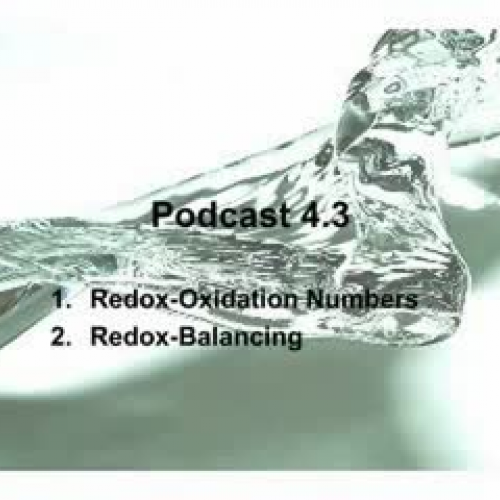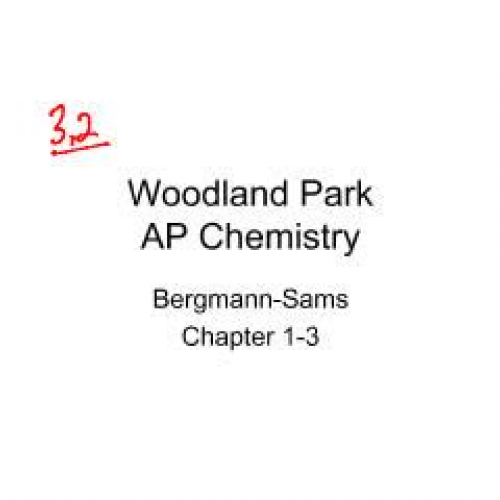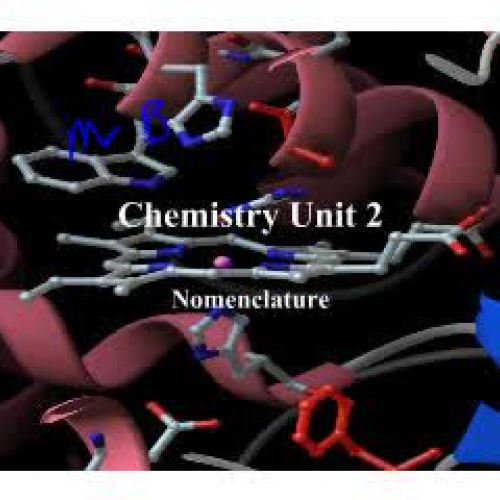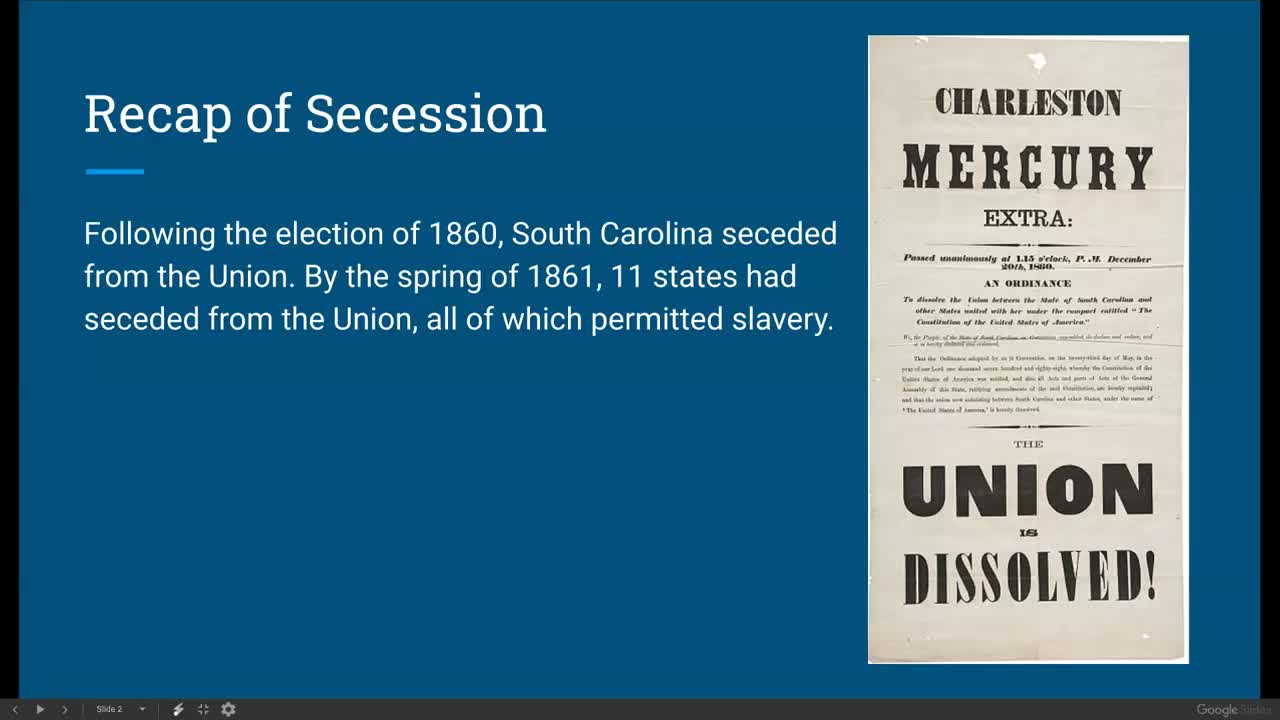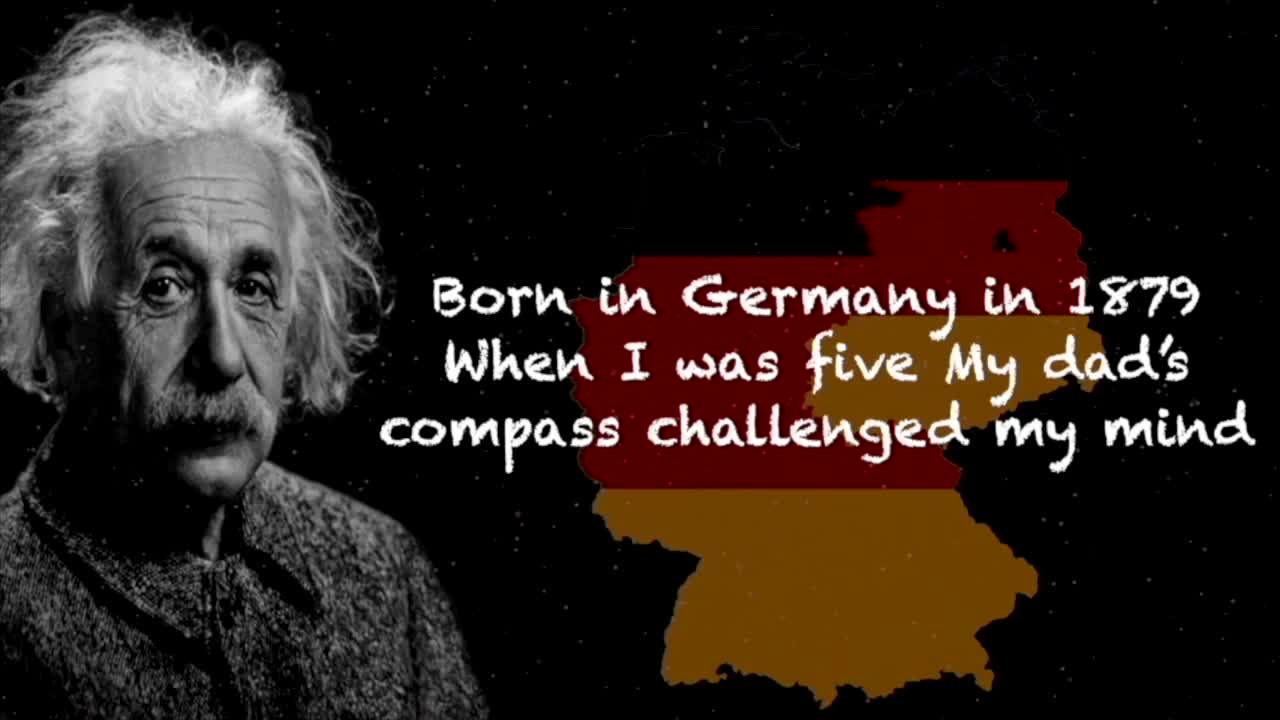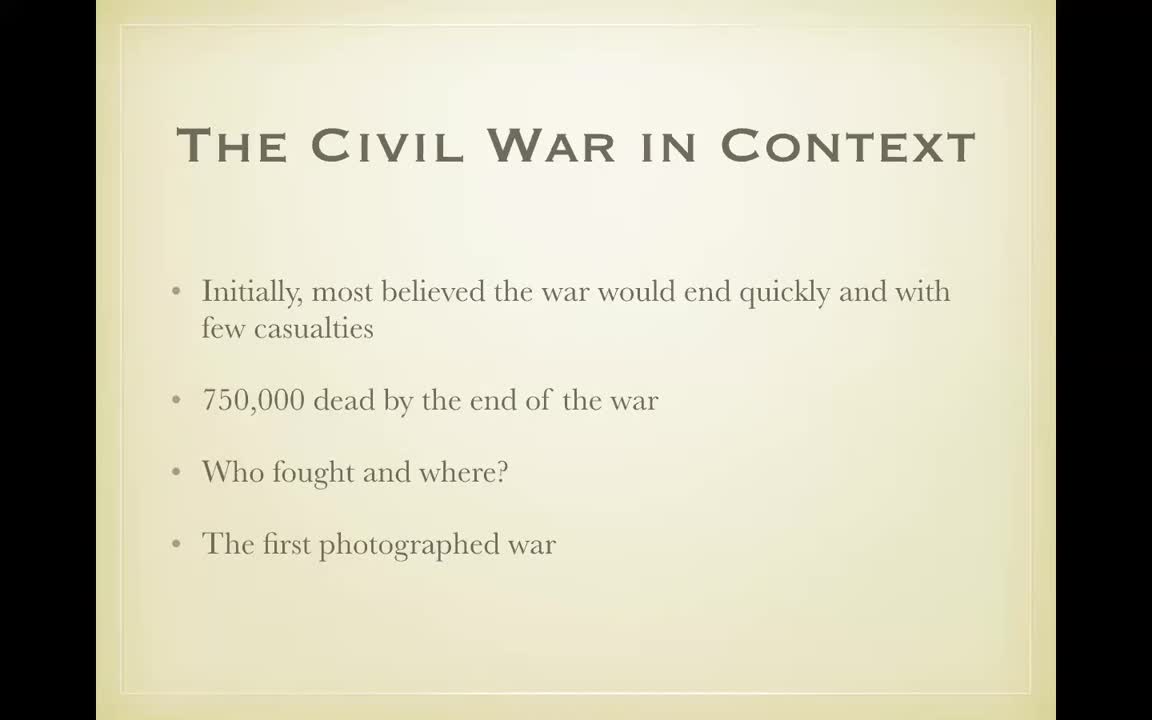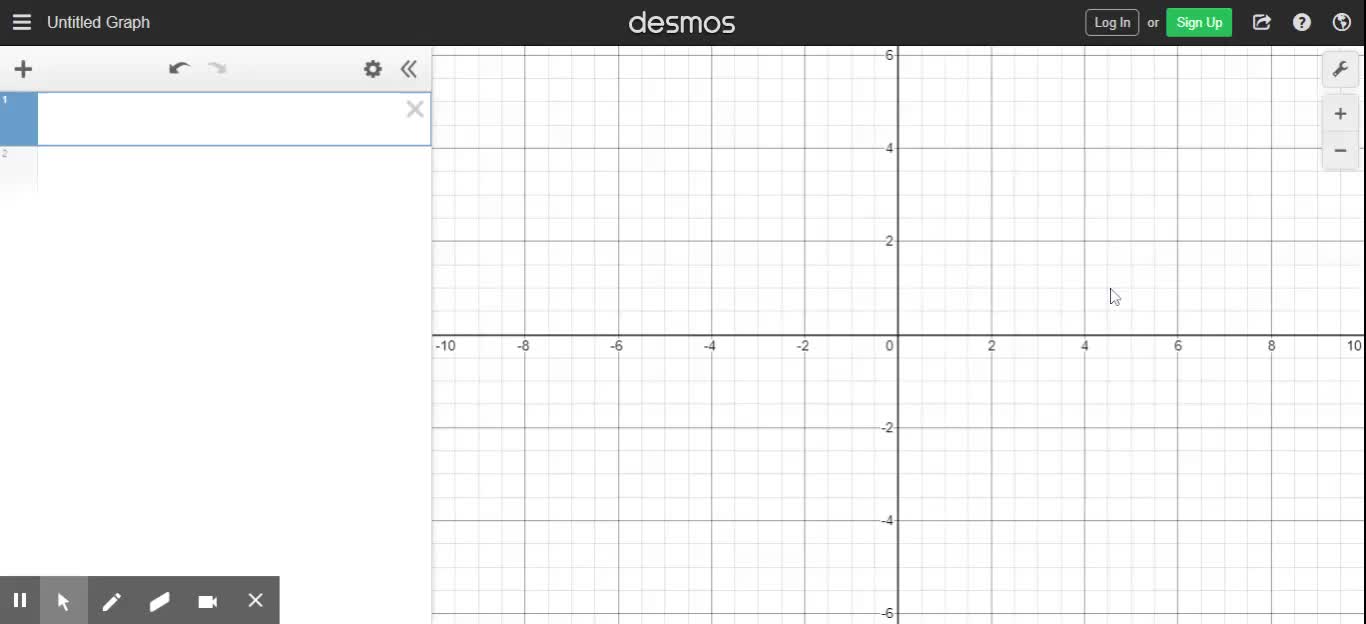WPHS Chemistry Podcast 2.6
High School / History / Podcasts
Good morning, ladies and gentlemen. This is mister Bergman again. Finishing up our unit to pod guests for your consumption here. This will be podcast number 2.6. I want to learn how to name molecular compounds on an acid. This is actually a lot easier than the ones you've been working on. You've been learning how to name ionic compounds and today what we want to do is we're going to learn how to name molecular compounds. Now, first of all, comic book 7, 27 here. We're learning how to name covalent compounds. Now, just to recall, we've been quite a bit of time working on this other stuff. Covalent is a nonmetal bonded to a nonmetal. It's very important that you make sure you understand the difference. When you have an ionic bonding, so an ionic, that's a metal to a nonmetal, and then in a covalent non level. Here, what I like to think of it is in ionic naming, actually, let me have you write this down there down in 2075 some space. Maybe top of 28. And when you talk about naming, there is ionic, and you use the Roman system. All right, Roman numerals for transition metals. And the Roman numerals that charge. If it's covalent compound, sometimes called molecular same things, right? Then we'll use the Greek system. It's a whole different system of naming. And by the way, there's sort of a third one. We're going to learn in just a little bit acid naming. And acids have hydrogen in it. Hydrogen bonded to something else. And we'll talk about that. Now, in the Greek system, we're using some Greek prefixes. And I think you're supposed to put this down in your composition books. But you need to know that one is mono to his die through his tried. Forrest tetra now the way to remember tetra, by the way, many of you have played the game called Tetris unlike your computers. And if you remember in the game of Tetris, you work with objects to try and name match, particular it's a puzzle game, but you might notice in every one of the shapes I've drawn several of the shapes here. They have four boxes. And that sort of tetra actually means four. That's why I gave the computer game that name. Hexa for 6 to four 7 octave like an octopus 8 nana for 9 and deck of for ten. In the Olympics, they have a decathlon. They also have a heptathlon. And the 7 events in the heptathlon intent events in the deck half a line. All right. So when we're to name compounds, this is just really, really simple. What you have to do is you notice that phosphorus and oxygen are both nonmetals. So if you have two of them, you're going to cause diphosphorus. And last name would be ten dark side. And a couple of things about this notice that this is an IDE so the second element, the second element in Athens. The second element will end in IDE. Okay? So think about this one. There are four nitrogens. So there's that tetra word. So we'll say tetra nitrogen. Now, by the way, notice that the first one ends in the regular element name. So nitrogen phosphorus, you don't say phosphide or nitride. So tetra nitrogen and this would be deck oxide. As a side note, if you end with the O, if you have oxide, we don't say ten to oxide. We say deck oxide. We don't say tetra oxide. We don't put two vowels together. Not a big deal. This one right here would be dye, you owe our difluorine. Now, since there's only one oxygen, we'll say monoxide. All right? Now, if you have just I don't know if I have this. That's an example. Actually, well, here's a good one going near the direction. If I have a carbon monoxide, carbon is C and mono means one, so carbon monoxide, common chemical, you may have heard before. This is tetraphosphate, deck oxide. So tetra, so it's P four O ten. Nitrogen triiodide in I three. These are much easier, aren't you? You're going, oh man, that was nice. That was super duper easy. They are easy. But the mistake you got to watch on these is, as I talked about in this slide coming up, is you've got to make sure that you're applying the right naming system to the right compound. It just has to do with charges, the ionic ones that are charges in Roman numerals. The Greek ones, you just mono di tri tetra, and you're good to go. So it is a really super duper easy method, but you've got to work on that. A couple more examples. Let's say P 6 O 8. How would you name that? Phosphorus good. And then octoxide. There's a word. Oxide. How about OF two? This would be oxygen, by the way, you don't say mono oxygen at first one is by itself. And then you would say die fluoride. Makes sense. Those are pretty simple. We don't probably need to spend too much time. Next page. Your composition book to the next page. We want to learn how to name assets. Now, remember assets are in H, let's say this order with some kind of an anion. So if you have H CL, you don't have to put the bond there. Unless there's a hydrogen with it. So if you have hydrogen first and then like with C two H three O two, that's the acetate ion. So hydrogen acid that's actually called acetic acid. We'll learn about the naming a minute or we can have H two SO four. We're going to have HBR. We can have HNO three. These are all examples of acid. Notice this is H and then something. Now sometimes they can have more than one of these, like I've got H two SO four here, but that's still the case. Now, here's the key to have this in your in the room, actually. And this is going to sound sort of a Greek ish to you. I apologize, but you'll figure it out. If it ends in Ide, then it becomes a hydro ick acid. This is actually, maybe we should just say if the anion ends in this, it becomes something hydro blank ick acid. This looks Greek to you. You're going to probably need to pause it. If it ends in 8, it's going to become an us acid. And if it ends in 8, it becomes an ick acid. Now that just goes like what in blazes and so I'd hydro it us 8, what is that? It's kind of like a weird like Greek ish language. But you'll see, let me do some examples. So if you didn't get this all copy down, you should certainly pause the video. All right. So if I have H in O three, now what you need to do is look at this anion. Which is on your memory list. Hopefully you've memorized it right now. But if you haven't in O three, you probably know, is nitrate. Notice it ends in 8. Nitrate is not the answer. We're just going to use the nitrate to get us the answer because if it ends in 8, look at your chart there. If it ends in 8, it becomes a ick acid. So this is called nitric acid. So HNO three is nitric acid. What if I have H three PO three? How do you name that? Take a look at the PO three. Now the PO three is from your list. Now look this up if you may need to go slow, fast, fight. Now the ins and out. So if it ends in height, it becomes a look at your little chart there. It becomes an OUS asset. So this is foss for us, acid. We do add this extra word, the word acid, of course. Take another one. What if it ends in I? So let's say we have H, BR. Now, BR is name is bromide. So if it ends in I, it becomes a hydro something it acid, so this is hydro bro Nick. Acid. See, hydro, and then whatever. Ick, I see. It looks like a K hydrobromic acid. All right, how about this one? HC and what CN, look on your polynomial. That is psi. So if it ends in I, it becomes a hydro ik acid. So this is hydro, and then it's all psi and acid. Good? Hopefully that's helping you. All right. Let's go the other direction. Let's say I have sulfuric acid, which is formulas. We're going to go in the other direction. Well, if it ends in an ick acid, it came from an 8. So what came from Seoul fake? I'm sorry to spell the thing out. So that's sulfate. What's the formula of sulfate? It's SO four. Two minus. And so remember acids have to have an H and H has a charge of positive one. So we now need to kind of do the ionic game. What's the charge? What's the formula that's going to be? It's going to be H two SO four because you need two H's. Here, the cancel off the minus two charge. So sulfuric acid is H two SO not too tough, is it? Let's say I have nitrous acid. Which is formula. Now, if it ends in OUS, it came from something I. So this is trite. What is nitrate? It's in, look it on your table, look at table. Two, minus. Well, to make it an acid, we put them with an H positive to those at up to zero. Well, positive one here, negative one they do. So it's just simply H in O two. Not too bad. What about hydro? Chloric acid. Well, if it's got a hydro and an ick, it came from an eyed. So when you see the core, so this is simply chloride. And chloride, of course, is C, L negative. And then we're going to put that with a hydrogen, because it's an acid. And do they add up to zero? You bet your bumpers they do. HCL. I don't know what a bumper is, but all right, let's do another one. If I say per core, it acid. Now, if it ends in an ick, it ended, its ion ended in 8. So it's going to be perchlorate. Per chlorate. Now, what is perchlorate? That's equal to what C look on your chart look, LO four negative. Put that with a hydrogen. Do the add up to zero, new bet your bibby. And it's a HCL O four, and that is perchloric acid. Hopefully that gets at the 11 minutes. Wow. So that ends. This is the last podcast. Of unit two. See you guys in class or somebody will, mister Sam is good.
